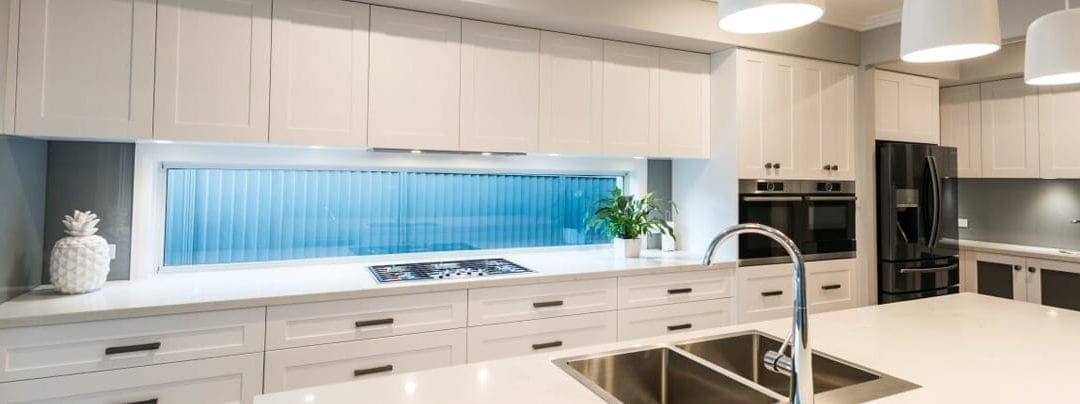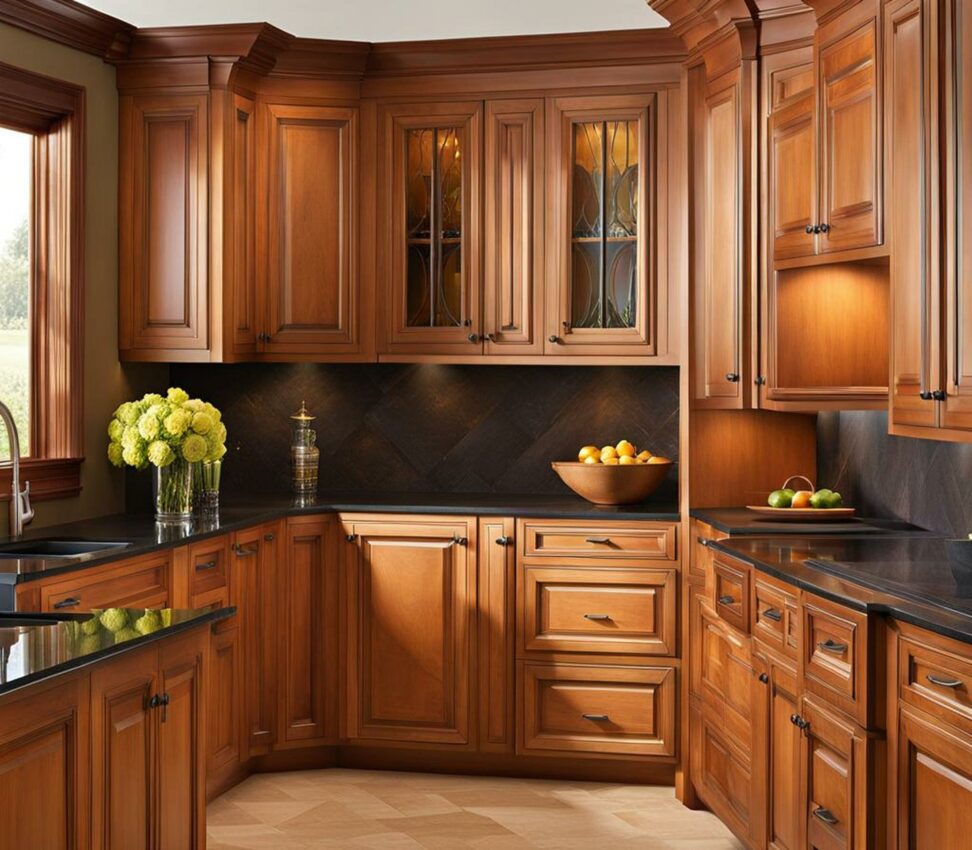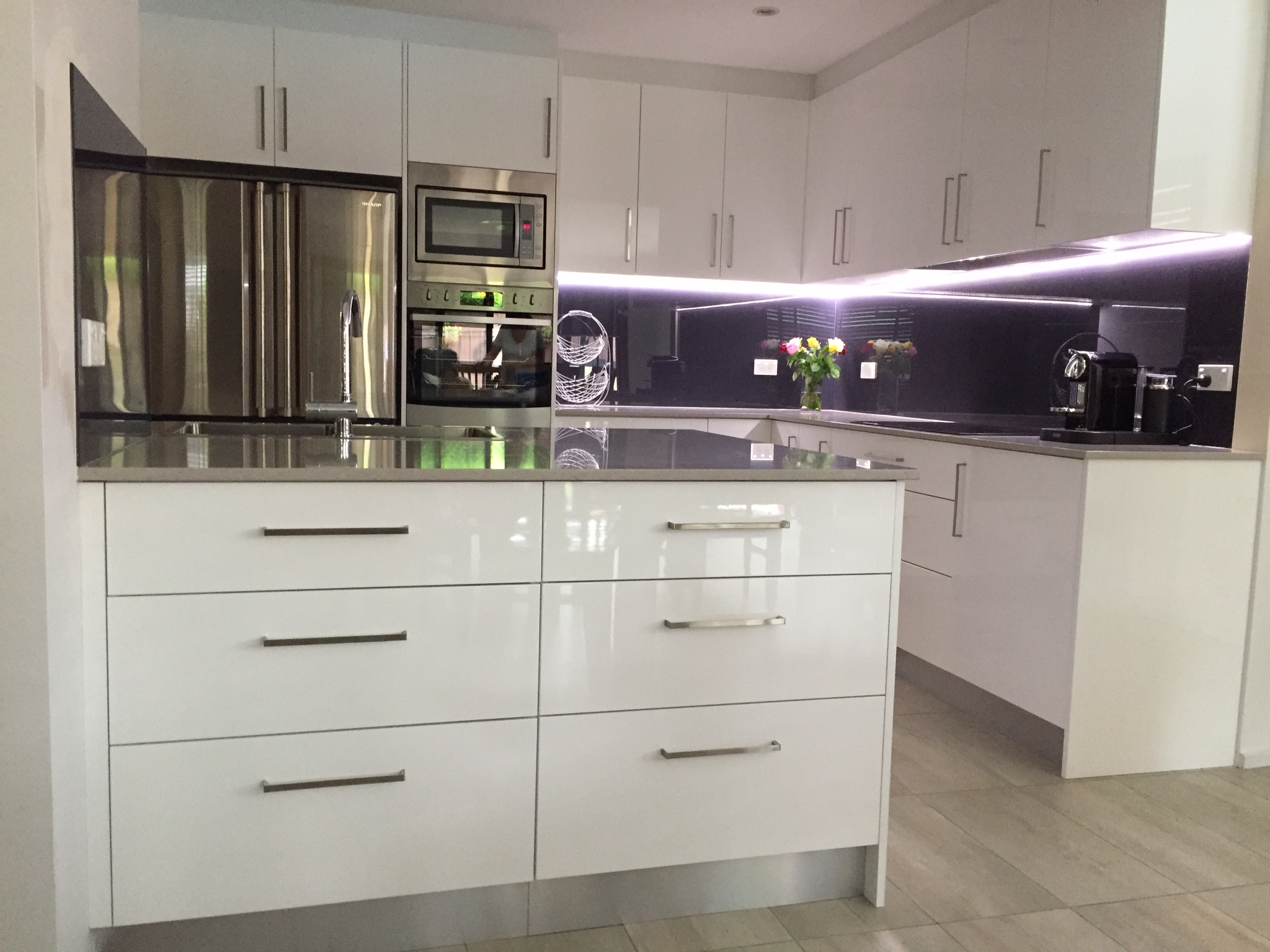Understanding Poly Stain

Poly stain is a versatile and durable finish that is commonly used on kitchen cabinets. It offers a combination of color and protection, making it a popular choice for homeowners looking to enhance the look and longevity of their cabinetry.
Poly Stain Composition and Application
Poly stain is a blend of oil-based resins, pigments, and solvents. The resins provide durability and protection, while the pigments impart color. Solvents are used to thin the stain and allow for easier application. Poly stain is typically applied in multiple thin coats to achieve the desired color and finish. The application process involves sanding, wiping, and drying between coats.
Benefits of Using Poly Stain on Kitchen Cabinets
Poly stain offers numerous benefits for kitchen cabinets, making it a preferred choice for many homeowners.
Durability and Protection
Poly stain creates a hard, durable finish that protects cabinets from scratches, dents, and moisture. This makes it ideal for high-traffic areas like kitchens, where cabinets are subjected to daily wear and tear.
Aesthetic Appeal
Poly stain can enhance the natural beauty of wood grain, providing a rich, warm look that complements a variety of kitchen styles. It is available in a wide range of colors, allowing homeowners to customize their cabinets to match their personal preferences.
Easy Maintenance
Poly stain finishes are relatively easy to maintain. They can be cleaned with mild soap and water, and they are resistant to stains and spills.
Types of Poly Stains for Kitchen Cabinets
There are several types of poly stains available for kitchen cabinets, each with its unique characteristics.
Oil-Based Poly Stain
Oil-based poly stains are known for their durability and rich finish. They offer excellent protection against moisture and scratches, making them ideal for high-traffic areas. However, they can take longer to dry and have a strong odor.
Water-Based Poly Stain
Water-based poly stains are a more environmentally friendly option than oil-based stains. They dry quickly and have minimal odor, making them a popular choice for homeowners who are concerned about indoor air quality. However, they may not be as durable as oil-based stains.
Lacquer-Based Poly Stain
Lacquer-based poly stains offer a very hard and durable finish. They are known for their high gloss and quick drying time. However, they can be more difficult to apply than other types of poly stains.
Varnish-Based Poly Stain
Varnish-based poly stains are a hybrid option that combines the durability of oil-based stains with the ease of application of water-based stains. They offer a good balance of durability, protection, and aesthetics.
Identifying and Analyzing Poly Stain Issues: Poly Stain On Kitchen Cabinets

Poly stain, a popular choice for kitchen cabinets, can be a durable and beautiful finish. However, even with careful application, issues can arise, leading to disappointment and the need for costly repairs. Understanding the common problems and their causes is crucial for preventing them or addressing them effectively. This guide will delve into the most frequent poly stain issues on kitchen cabinets, providing insights into their root causes and offering solutions for mitigation.
Discoloration
Discoloration is a common issue with poly stain, often appearing as yellowing, darkening, or uneven color distribution. This can be caused by a number of factors, including:
- Improper Application: Applying too many coats, using a dirty brush, or failing to adequately prepare the wood surface can all contribute to discoloration.
- Environmental Factors: Exposure to direct sunlight, heat, or humidity can also cause poly stain to yellow or darken over time.
- Product Quality: Some poly stains are simply more prone to discoloration than others, especially those with low-quality ingredients or poor UV protection.
Peeling, Poly stain on kitchen cabinets
Peeling occurs when the poly stain layer separates from the wood surface, leaving unsightly patches and exposing the raw wood underneath. This issue can arise from:
- Poor Adhesion: If the wood surface is not properly cleaned or prepared, the poly stain may not adhere properly, leading to peeling.
- Moisture Trapping: Applying too many thick coats of poly stain can trap moisture beneath the surface, creating a breeding ground for mold and mildew, which can weaken the bond and cause peeling.
- Temperature Fluctuations: Extreme temperature changes, especially rapid shifts from hot to cold, can stress the poly stain layer and cause it to peel.
Uneven Application
Uneven application of poly stain can result in visible streaks, brush marks, or uneven gloss levels. This is often caused by:
- Inadequate Stirring: Poly stain needs to be thoroughly stirred before application to ensure consistent color and viscosity.
- Overlapping Coats: Applying too much poly stain in one area can lead to uneven coverage and a “piled-up” appearance.
- Incorrect Brush Technique: Using the wrong type of brush or applying the poly stain with too much pressure can create streaks and brush marks.
Troubleshooting Poly Stain Issues
| Issue | Potential Causes | Recommended Solutions |
|—|—|—|
| Discoloration | Improper application, environmental factors, product quality | Thoroughly clean and prepare the wood surface, use a high-quality poly stain with UV protection, apply thin coats, avoid direct sunlight and heat exposure |
| Peeling | Poor adhesion, moisture trapping, temperature fluctuations | Ensure proper surface preparation, apply thin coats, allow sufficient drying time between coats, control temperature fluctuations |
| Uneven Application | Inadequate stirring, overlapping coats, incorrect brush technique | Thoroughly stir the poly stain, apply thin coats with light, even strokes, use a high-quality brush |
Solutions for Poly Stain Problems

Dealing with poly stain issues on kitchen cabinets can be frustrating, but there are solutions to restore their beauty and functionality. Whether it’s removing unwanted stain, repairing damaged areas, or reapplying for a fresh finish, understanding the proper techniques is crucial.
Removing Poly Stain
Removing poly stain from kitchen cabinets requires a methodical approach. Several techniques are commonly used, each with its pros and cons.
- Sanding: This method involves using sandpaper to gradually remove the poly stain layer. It’s effective for minor imperfections or removing old, uneven coatings. However, sanding can be time-consuming and requires careful attention to avoid damaging the underlying wood.
- Stripping: Chemical strippers are specifically designed to dissolve poly stain, making it easier to remove. This method is particularly useful for removing thick layers or stubborn stains. However, strippers can be harsh and require proper ventilation and protective gear. It’s essential to follow the manufacturer’s instructions carefully.
- Chemical Removal: Specialized chemical removers are available for removing poly stain without sanding or stripping. These solutions are often less harsh than strippers and may be suitable for delicate surfaces. However, their effectiveness can vary depending on the type of poly stain and the severity of the issue.
Repairing Damaged Areas
Damaged areas on kitchen cabinets, such as scratches, dents, and peeling, can be repaired to restore their appearance.
- Scratches: Minor scratches can often be concealed by using a wood filler or a touch-up pen. For deeper scratches, sanding and refinishing may be necessary.
- Dents: Small dents can be filled with wood filler and then sanded smooth. Larger dents may require more extensive repairs, such as using a wood patch or replacing the affected section.
- Peeling: Peeling poly stain is usually caused by poor adhesion or damage to the underlying wood. The affected area needs to be stripped and refinished. If the peeling is extensive, it may be necessary to replace the cabinet doors or drawer fronts.
Reapplying Poly Stain
Reapplying poly stain can refresh the look of your kitchen cabinets and protect them from future damage.
- Preparation: Thoroughly clean the cabinets to remove any dirt, grease, or residue. Sand the surface lightly to create a smooth finish and ensure proper adhesion.
- Application: Apply the poly stain in thin, even coats, following the manufacturer’s instructions. Allow each coat to dry completely before applying the next.
- Finishing: Once the poly stain is dry, sand lightly between coats to achieve a smooth and consistent finish. Apply a final coat of sealant for added protection.
Poly stain on kitchen cabinets can be a real pain, especially if you’re trying to achieve a certain look. You might think about stripping the old finish, but that’s a lot of work. Sometimes, though, it’s good to think outside the box, just like the “Black Cabinet” did during the early 20th century, a group of African American leaders who advocated for social change.
What was the Black Cabinet and their innovative approach to tackling social issues reminds us that sometimes, a little creativity can go a long way, even when dealing with something as seemingly mundane as poly stain on kitchen cabinets.
Poly stain on kitchen cabinets can be a real pain, but luckily, it’s usually easy to fix with a little elbow grease. Sometimes, though, you might need a bit more security, like a good, sturdy file cabinet lock bar – you can find those at file cabinet lock bar lowes.
Once your cabinets are looking their best, you’ll want to keep them that way, and a good lock bar can help protect your important documents from prying eyes.
